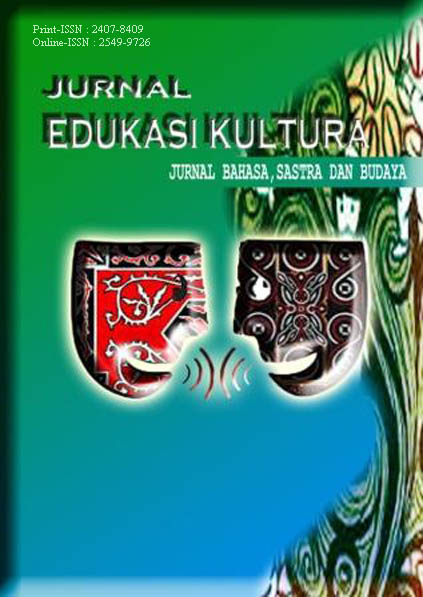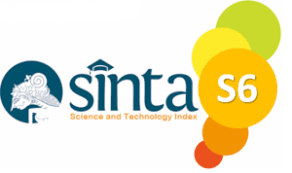Model Pembelajaran Realistik Berbasis Kearifan Lokal Dalam Mengenalkan Konsep Bilangan Bulat Di Sekolah Dasar
DOI:
https://doi.org/10.24114/edukasikultura.v12i1.67437Abstract
This study aims to explore the application of a local wisdom-based realistic mathematics learning model in introducing the concept of whole numbers to elementary school students. This approach emphasizes the importance of linking mathematical material with students' real life, so that learning becomes more meaningful and contextual. The research was conducted through a literature study, by analyzing various sources that discuss realistic mathematics learning and its integration with local wisdom values. One concrete form of this integration is the use of the traditional game congklak in the learning process. The results of the study show that the realistic approach helps students understand the concept of whole numbers gradually through concrete experiences and activities that are close to their world. This learning model provides an innovative and adaptive alternative strategy for teachers, especially in an effort to improve the quality of mathematics learning in elementary schools through a more contextual and culturally-sensitive approach.References
1. Afrida, A., & Haji, S. (2017). Pengaruh Pendekatan Matematika Realistik terhadap Kemampuan Penalaran dan Kemampuan Pemahaman Konsep Matematika Dikelas Viiismpn 1 Selupu Rejang Kabupaten Rejang Lebong. Jurnal Pendidikan Matematika Raflesia, 2(1).
2. Agustina, N. (2023). Peningkatan Hasil Belajar Matematika Realistik Tentang Bangun Ruang Dengan Model Project Based Learning Di Kelas 5 Sdn Punten 02 Batu . Jurnal Pendidikan Taman Widya Humaniora, 1467-1490.
3. Andriono, R. (2021). Analisis peran etnomatematika dalam pembelajaran matematika. ANARGYA: Jurnal Ilmiah Pendidikan Matematika, 4(2).
4. Andriyani, &, Kuntarto, E. (2017). Etnomatematika : Model Baru dalam Pembelajaran. Jurnal Gantang, II (2): 133 144.
5. Annisha, D. (2024). Integrasi Penggunaan Kearifan Lokal (Local Wisdom) Dalam Proses Pembelajaran Pada Konsep Kurikulum Merdeka Belajar. Jurnal Basicude, 2108 - 2115.
6. Fadhilah Lailatul Maghfiroh, S. M. (2021). Keefektifan Pendekatan Pendidikan Matematika Realistik Indonesia terhadap KemampuanLiterasi Numerasi Siswa di Sekolah Dasar. JURNALBASICEDU, Volume 5 Nomor 5, 3342 -3351.
7. Fatimah, S., Fajriyah, R. Z., Zahra, F. F., & Prasetyo, S. (2024). Integrasi Etnomatematika Dalam Pembelajaran Matematika Di Sekolah Dasar Berbasis Kesenian Tari Budaya Lampung. Al-Madrasah: Jurnal Ilmiah Pendidikan Madrasah Ibtidaiyah, 1631-1640.
8. Gravemeijer, Koeno. (1994). Developing Realistic Mathematics Education. Utrecht: Technipress.
9. Hadijah, S., Aulia, L., & Eviyanti, C. Y. (2020). Integrasi Budaya Aceh Kedalam Media Pembelajaran Matematika Interaktif Untuk Meningkatkan Hasil Belajar Siswa. Jurnal Cendekia: Jurnal Pendidikan Matematika, 1143-1152.
10. Haji, S. (2012). Model Bahan Ajar Matematika SMA Berbasis Realistic Mathematics Education untuk Mendukung Pencapaian Tujuan Pengajaran Matematika SMA di Provinsi Bengkulu. Proseding Seminar Nasional Universitas Pasundan. 21 Januari 2012. No. ISBN 978-602-19775-0-7. Hal.41.
11. Haji, S. dan Abdullah, M.I. (2014). Model Pembelajaran Matematika Realistik Untuk Menigkatkan Kemampuan Berpikir Matematika Tingkat Tinggi dan Kemandirian Belajar Siswa. Laporan Penelitian. Universitas Bengkulu.
12. Irmina Veronika Uskono, K. D. (2019). Penerapan Model Pembelajaran Matematika Realistik Pada Pokok Bahasan Bilangan Bulat. Jurnal Pendidikan Matematika, Vol. 1No. 2, 138-144.
13. Julie, (2016. Prestasi Belajar Matematika Ditinjau ... Christopher, I. O., Julie, O. I., & Janehilda, A. O.
14. Khairunnisa, Sutisna, A., & Margono, G. (2024). Kajian Literatur Efektivitas Penggunaan Computerized Adaptive Testing sebagai Alat Ukur. Edukatif: Jurnal Ilmu Pendidikan, 36 - 40.
15. Lubis, A. N. M. T., & Siregar, F. A. (2022). Pengaruh Model Pembelajaran Matematika Realistik Berorientasi Etnomatematika Bengkulu Terhadap Kemampuan Pembuktian Prinsip-Prinsip Matematika. Jurnal MATH-UMB. EDU, 9(2).
16. Lubis, A. N. M. T., & Widada, W. (2020). Kemampuan Problem Solving Siswa melalui Model Pembelajaran Matematika Realistik Berorientasi Etnomatematika Bengkulu. Jurnal Pendidikan Matematika Raflesia, 5(1), 127-133.
17. Lubis, A. N. M. T., & Yanti, D. (2018). Identifikasi etnomatematika batik besurek bengkulu sebagai media dan alat peraga penyampaian kekongruenan dan konsep kesebangunan. Wahana Didaktika, 16(3).
18. Lusiana. (2018). Integrasi Kearifan Lokal Dalam Pembelajaran Matematikan Dengan Pendekatan Contekstual Learning. Wahana Didaktika, 366-375.
19. Mulbar, U., Alimuddin, & Farhan, M. (2024). PKM Pelatihan Implementasi Pembelajaran Matematika Realistik Yang Berkearifan Lokal Budaya Masyarakat. JHP2M: Jurnal Hasil-Hasil Pengabdian dan Pemberdayaan Masyarakat, 285-293.
20. Nuraini, L. (2018). Integrasi Nilai Kearifan Lokal Dalam Pembelajaran Matematika SD/MI Kurikulum 2013. Jurnal Pendidikan Matematika, 1-17.
21. Putri, L. I. (2017). Etnomatematika, Kesenian Tradisional Rebana, Pembelajaran Matematika. IV (1): 21–31.
22. Rezki, I., & Sari, R. H. (2024). Pengembangan E-book Materi Jual Beli dengan Pendekatan Matematika Realistik Berbasis Kearifan Lokal Suku Dayak Kalimantan Tengah untuk Mengatasi Cognitive Load. Jurnal Penelitian Pendidikan dan Pengajaran Matematika, 51-68.
23. Sopia, H., & Wutsqa, D. (2015). Keefektifan pendekatan realistik ditinjau dari prestasi belajar, kemampuan pemecahan masalah.
24. Zulkardi. (2002). Development a Learning Environment on Realistic Mathematics Education for Teachers. Indonesian Published Student Dissertation. Enschede: University of Twente.
Downloads
Published
How to Cite
Issue
Section
License
Copyright (c) 2025 Farah Nabila, Nadya Tesalonika Simbolon, Nursari Wahyuni Sigalingging, Siti Annisa

This work is licensed under a Creative Commons Attribution 4.0 International License.

This work is licensed under a Creative Commons Attribution 4.0 International License
Authors who publish with this journal agree to the following terms:
- Authors retain copyright and grant the journal right of first publication with the work simultaneously licensed under Creative Commons Attribution 4.0 International License that allows others to share the work with an acknowledgement of the work's authorship and initial publication in this journal.
- Authors are able to enter into separate, additional contractual arrangements for the non-exclusive distribution of the journal's published version of the work (e.g., post it to an institutional repository or publish it in a book), with an acknowledgement of its initial publication in this journal.Penulis.
- Authors are permitted and encouraged to post their work online (e.g., in institutional repositories or on their website) prior to and during the submission process, as it can lead to productive exchanges, as well as earlier and greater citation of published work (Refer to The Effect of Open Access).











